1954 FIFA World Cup
The 1954 FIFA World Cup, the fifth staging of the FIFA World Cup, was held in Switzerland from 16 June to 4 July. Switzerland was chosen as host country in July 1946.[1] The tournament set a number of all-time records for goal-scoring, including the highest average number of goals scored per game. The tournament was won by West Germany, who defeated Hungary 3–2 in the final, giving them their first title.
| FIFA Fussball-Weltmeisterschaft 1954 Schweiz Championnat du Monde de Football 1954 Campionato mondiale di calcio 1954 Campiunadis mundials da ballape 1954 | |
|---|---|
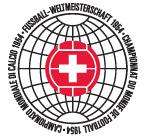 1954 FIFA World Cup official logo | |
| Tournament details | |
| Host country | Switzerland |
| Dates | 16 June – 4 July |
| Teams | 16 (from 4 confederations) |
| Venue(s) | 6 (in 6 host cities) |
| Final positions | |
| Champions | |
| Runners-up | |
| Third place | |
| Fourth place | |
| Tournament statistics | |
| Matches played | 26 |
| Goals scored | 140 (5.38 per match) |
| Attendance | 768,607 (29,562 per match) |
| Top scorer(s) | |
Host selection
Switzerland was awarded the tournament unopposed on 22 July 1946, the same day that Brazil was selected for the 1950 World Cup, in Luxembourg City.[1]
Qualification
The hosts (Switzerland) and the defending champions (Uruguay) qualified automatically. Of the remaining 14 places, 11 were allocated to Europe (including Egypt, Turkey, and Israel), two to the Americas, and one to Asia.
Scotland, Turkey, and South Korea made their World Cup debuts at this tournament (Turkey and Scotland had qualified for the 1950 competition but both withdrew). South Korea became the first independent Asian country to qualify for the World Cup. Austria appeared for the first time since 1934. Turkey would not participate at a finals again until the 2002 competition, while South Korea's next appearance would be in 1986.
The third and fourth place teams from 1950, Sweden and Spain, both failed to qualify. In a shock result, Spain was eliminated by Turkey: after the two countries had tied a three-game series, Turkey progressed by drawing of lots [2] by a blindfolded Italian boy.[3]
German teams as well as Japan were allowed to qualify again, after having been banned from the 1950 FIFA World Cup. West Germany qualified against fellow Germans from the Saarland (which then was a French protectorate), while East Germany had not entered, cancelling international football games after the East German uprising of 1953. Argentina declined to participate for the third World Cup in succession.
List of qualified teams
The following 16 teams qualified for the final tournament.

.svg.png)
.svg.png)


.svg.png)
.svg.png)

.svg.png)
.svg.png)
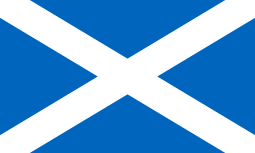


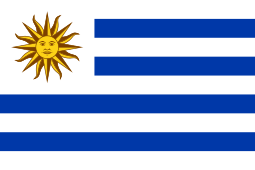

.svg.png)
Summary
Format
The 1954 tournament used a unique format. The sixteen qualifying teams were divided into four groups of four teams each. Each group contained two seeded teams and two unseeded teams. Only four matches were scheduled for each group, each pitting a seeded team against an unseeded team. This contrasts with the usual round-robin in which every team plays every other team: six matches in each group. Another oddity was that extra time, which in most tournaments is not employed at the group stage, was played in the group games if the score was level after 90 minutes, with the result being a draw if the scores were still level after 120 minutes.
Two points were awarded for a win and one for a draw. The two teams with the most points from each group progressed to the knockout stage. If the first and second placed teams were level on points, lots were drawn to decide which team would top the group. However, if the second and third placed teams were level on points, there was a play-off to decide which team would progress to the next stage.[4]
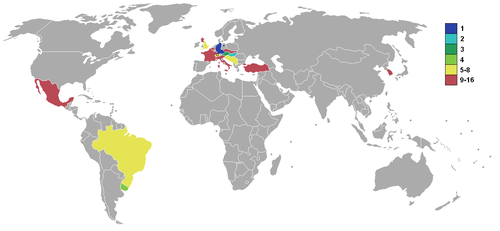
It turned out that two of the four groups required play-offs, and the other two required drawing of lots between the two top teams. The play-offs were between Switzerland and Italy, and Turkey and West Germany: in both matches the unseeded teams (Switzerland and West Germany) repeated earlier victories against the seeds (Italy and Turkey) to progress. In the other two groups, lots were drawn to determine the first-place teams, resulting in Uruguay and Brazil finishing above Austria and Yugoslavia, respectively.
A further unusual feature of the format was that the four group-winning teams were drawn against each other in the knockout stages to produce one finalist, and the four second-placed teams played against each other to produce the second finalist. In subsequent tournaments it has become customary to draw group winners against second-placed teams in the first knockout round.
In any knockout game tied after 90 minutes, 30 minutes of extra time were played. If the scores had still been level after extra time, in any knockout game other than the final, lots would have been drawn to decide which team progressed. However, if the final had been tied after extra time, it would have been replayed, with lots deciding the winner only if the replay was also tied after extra time.[5] In the event, all the knockout games were decided in either normal time or extra time, with no replays or drawing of lots being required.
Seeding
Before qualification was complete, the eight seeded teams were determined by FIFA based on world rankings. They were Austria, Brazil, England, France, Hungary, Italy, Spain, and Uruguay.
These seedings were thrown into disarray when, in an unexpected result, Turkey eliminated Spain in qualification. FIFA resolved this situation by giving Turkey the seeding that had previously been allocated to Spain.[6]
Notable results
West Germany, who had been reinstated as full FIFA members only in 1950 and were unseeded, convincingly won the first of two encounters with the seeded Turkish side at Wankdorf stadium in Berne. The South Koreans, the other unseeded team, lost 7–0 and 9–0, with West Germany being denied the chance to play such an easy opponent. Sepp Herberger, the West German coach, gambled against the seeded team of Hungary by sending in a reserve side, and lost 8–3; so they had to play off against Turkey, a match that West Germany easily won.
Hungary's team captain Ferenc Puskás, considered by many as the best player in the world in that time, was injured by West German defender Werner Liebrich, and had to miss Hungary's next two matches. Puskás played for Hungary in the final, despite still being in a questionable condition.[7]
In the quarter-finals, the favourites Hungary beat Brazil 4–2 in one of the most violent matches in football history, which became infamous as the Battle of Berne. Meanwhile, the World Cup holders Uruguay sent England out of the tournament, also by 4–2. West Germany dispatched Yugoslavia 2–0, and Austria beat the host nation Switzerland in the game that saw the most goals in any World Cup match, 7–5.
In the first semi-final, West Germany beat Austria 6–1.
The other semi-final, one of the most exciting games of the tournament, saw Hungary go into the second half leading Uruguay 1–0, only for the game to be taken to extra time with a score after 90 minutes of 2–2. The deadlock was broken by Sándor Kocsis with two late goals to take Hungary through to the final, with Uruguay finally losing their unbeaten record in World Cup Final matches. Uruguay then went on to be beaten for a second time as Austria secured third place.
Final: "The Miracle of Bern"
The Wankdorf Stadion in Berne saw 60,000 people cram inside to watch the final between West Germany and Hungary, a rematch of a first-round game, which Hungary had won 8–3 against the reserves of the German team. The Golden Team of the Hungarians were favourites, as they were unbeaten for a record of 32 consecutive matches, but they had had two tough knockout matches. It started raining on match day – in Germany this was dubbed Fritz-Walter-Wetter ("Fritz Walter's weather") because the West German team captain Fritz Walter was said to play his best in the rain. Adi Dassler had provided shoes with exchangeable studs.

Hungary's Ferenc Puskás played again in the final, even though he was not fully fit. Despite this he put his team ahead after only six minutes and with Zoltán Czibor adding another two minutes later it seemed that the pre-tournament favourites would take the title. However, with a quick goal from Max Morlock in the 10th and the equaliser of Helmut Rahn in the 19th, the tide began to turn.
The second half saw telling misses by the Hungarian team. Barely six minutes before the end of the match, the popular German radio reporter Herbert Zimmermann gave the most famous German piece of commentary, recommending that "Rahn should shoot from deep", which he did. The second goal from Rahn gave West Germany a 3–2 lead while the Hungarian reporter György Szepesi burst into tears. Later, Zimmermann called Puskás offside before he kicked the ball into Toni Turek's net with 2 minutes left. While referee Ling pointed to the centre spot, linesman Griffiths signalled offside. After a one-minute consultation, referee Ling disallowed the claimed equaliser.
The West Germans were handed the Jules Rimet Trophy and the title of World Cup winners, while the crowd sang along to the tune of the national anthem of West Germany. In Germany the success is known as "The Miracle of Berne", upon which a 2003 film of the same name was based. For the Hungarians, the defeat was a disaster, and remains controversial due to claimed referee errors and claims of doping.
One controversy concerns the 2–2 equaliser. Hungarian goalie Gyula Grosics jumped to catch Fritz Walter's corner shot, but in plain sight of the camera, Hans Schäfer obstructed him, and so the ball reached Rahn unhindered. The second controversy concerns allegations of doping to explain the better condition of the West German team in the second half. Though teammates steadfastly denied this rumour, German historian Guido Knopp claimed in a 2004 documentary for German public channel ZDF[8] that the players were injected with shots of vitamin C at half-time, using a needle earlier taken from a Soviet sports doctor, which would also explain the wave of jaundice among team members following the tournament. A Leipzig University study in 2010 posited that the West German players had been injected with the banned substance methamphetamine.[9]
Most controversial was the offside ruling for Puskás's intended 87th-minute equaliser. The camera filming the official footage was in a bad position to judge the situation, but eyewitnesses claimed that the referee was wrong, including West German substitute player Alfred Pfaff.[10] However, since then, unofficial footage surfaced evidencing no offside (shown on North German regional public channel NDR in 2004.[11])
Records
The following all-time records were set or equalled at this tournament, and have not subsequently been surpassed:
All matches in one tournament
- highest average goals per game (5.38)
Team records for one tournament
- most goals scored (Hungary, 27)
- highest average goals scored per game (Hungary, 5.4)
- highest aggregate goal difference (Hungary, +17)
- highest average goal difference per game (Hungary, +3.4)
- most goals scored, champions (West Germany, 25)
- most goals scored per game, champions (West Germany, 4.17)
- most goals conceded, champions (West Germany, 14)
- most goals conceded per game, champions (West Germany, 2.33)
- most goals conceded (South Korea, 16)
- lowest aggregate goal difference (South Korea, −16)
- most goals conceded per game (South Korea, 8, tied with Bolivia 1950)
- lowest average goal difference per game (South Korea, −8.0, tied with Bolivia 1950).
Records for a single game
Other landmarks
For the first time there was television coverage, and special coins were issued to mark the event.
The 11 goals scored by Kocsis of Hungary not only led the World Cup but bettered the previous record (set by Brazilian Ademir in the previous tournament) by three goals. Kocsis' mark was broken by Just Fontaine's 13 goals in 1958. Despite not winning the 1954 tournament, their fourth-place finish and their two previous World Cup titles made Uruguay the most successful World Cup nation for eight years, until Brazil won their second title in 1962. Hungary's 9–0 win against Korea during the group stages remains the biggest margin of victory in FIFA World Cup history, later equalled by Yugoslavia over Zaire (9–0) in 1974 and Hungary over El Salvador (10–1) in 1982.
West Germany also became the first team to win the World Cup after having lost a match at the finals (losing 8–3 to Hungary in the group stage). This feat was subsequently repeated by West Germany in 1974, Argentina in 1978 and Spain in 2010, who all lost group matches 1–0. Coincidentally, all three teams won against Netherlands sides in the final.
West Germany's 1954 victory remains the only time that a team has won the World Cup without playing any team from outside its own continent (Turkey is geographically partly in Asia, but qualified from Europe and has always been affiliated with UEFA).
West Germany's victory in the final is considered one of the greatest upsets of all time and one of the finest achievements in German sporting history. The West German team was made up of amateur players, as Germany did not have a professional league at this time, while the Hungarians were de jure amateurs, like all the communist countries at that time, but playing football as professionals, mainly for Budapesti Honvéd FC and later for major clubs like Real Madrid and Barcelona in Spain, and were ranked best in the world. This is the only time a team has won the World Cup with amateur footballers.
Venues
Six venues in six cities (1 venue in each city) hosted the tournament's 26 matches. The most used stadium was the St. Jakob stadium in Basel, which hosted 6 matches. The venues in Bern, Zurich and Lausanne each hosted 5 matches, the venue in Geneva hosted 4 matches and the venue in Lugano only hosted 1 match.
| Bern | Basel | Lausanne |
|---|---|---|
| Wankdorf Stadium | St. Jakob Stadium | Stade olympique de la Pontaise |
| 46°57′46″N 7°27′54″E | 47°32′29″N 7°37′12″E | 46°32′00″N 006°37′27″E |
| Capacity: 64,600 | Capacity: 54,800 | Capacity: 50,300 |
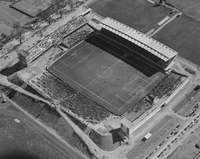 |
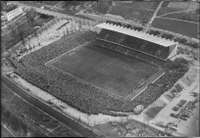 |
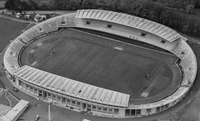 |
| Geneva | Lugano | Zürich |
| Charmilles Stadium | Cornaredo Stadium | Hardturm Stadium |
| 46.2091°N 6.1182°E | 46°01′25″N 8°57′42″E | 47°23′35″N 8°30′17″E |
| Capacity: 35,997 | Capacity: 35,800 | Capacity: 34,800 |
 |
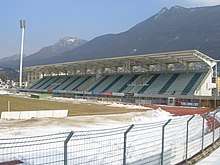 |
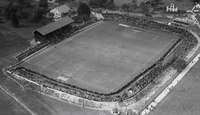 |
Squads
For a list of all squads that appeared in the final tournament, see 1954 FIFA World Cup squads.
Match officials

.svg.png)

.svg.png)

.svg.png)



.svg.png)

.svg.png)
.svg.png)


.svg.png)
Group stage
All times listed are local time (CET, UTC+1).
Group 1
| Pos | Team | Pld | W | D | L | GF | GA | GD | Pts | Qualification |
|---|---|---|---|---|---|---|---|---|---|---|
| 1 | 2 | 1 | 1 | 0 | 6 | 1 | +5 | 3[lower-alpha 1] | Advance to knockout stage | |
| 2 | 2 | 1 | 1 | 0 | 2 | 1 | +1 | 3[lower-alpha 1] | ||
| 3 | 2 | 1 | 0 | 1 | 3 | 3 | 0 | 2 | ||
| 4 | 2 | 0 | 0 | 2 | 2 | 8 | −6 | 0 |
Notes:
- Brazil finished ahead of Yugoslavia on drawing of lots.
Group 2
| Pos | Team | Pld | W | D | L | GF | GA | GD | Pts | Qualification |
|---|---|---|---|---|---|---|---|---|---|---|
| 1 | 2 | 2 | 0 | 0 | 17 | 3 | +14 | 4 | Advance to the knockout stage | |
| 2 | 2 | 1 | 0 | 1 | 7 | 9 | −2 | 2[lower-alpha 1] | ||
| 3 | 2 | 1 | 0 | 1 | 8 | 4 | +4 | 2[lower-alpha 1] | ||
| 4 | 2 | 0 | 0 | 2 | 0 | 16 | −16 | 0 |
Notes:
- Second place decided over through play-off: West Germany 7–2 Turkey.
| Hungary | 9–0 | |
|---|---|---|
| Puskás Lantos Kocsis Czibor Palotás |
Report |
| Hungary | 8–3 | |
|---|---|---|
| Kocsis Puskás Hidegkuti J. Tóth |
Report | Pfaff Rahn Herrmann |
Play-off
Group 3
| Team | Pld | W | D | L | GF | GA | GD | Pts |
|---|---|---|---|---|---|---|---|---|
| 2 | 2 | 0 | 0 | 9 | 0 | +9 | 4[lower-alpha 1] | |
| 2 | 2 | 0 | 0 | 6 | 0 | +6 | 4[lower-alpha 1] | |
| 2 | 0 | 0 | 2 | 0 | 7 | −7 | 0 | |
| 2 | 0 | 0 | 2 | 0 | 8 | −8 | 0 |
Notes:
- Uruguay finished ahead of Austria on drawing of lots
| Uruguay | 2–0 | |
|---|---|---|
| Míguez Schiaffino |
Report |
| Austria | 5–0 | |
|---|---|---|
| Stojaspal Probst |
Report |
Group 4
| Pos | Team | Pld | W | D | L | GF | GA | GD | Pts | Qualification |
|---|---|---|---|---|---|---|---|---|---|---|
| 1 | 2 | 1 | 1 | 0 | 6 | 4 | +2 | 3 | Advance to the knockout stage | |
| 2 | 2 | 1 | 0 | 1 | 2 | 3 | −1 | 2[lower-alpha 1] | ||
| 3 | 2 | 1 | 0 | 1 | 5 | 3 | +2 | 2[lower-alpha 1] | ||
| 4 | 2 | 0 | 1 | 1 | 5 | 8 | −3 | 1 |
Notes:
- Second place decided over through play-off: Switzerland 4–1 Italy
| England | 4–4 (a.e.t.) | |
|---|---|---|
| Broadis Lofthouse |
Report | Anoul Coppens Dickinson |
| England | 2–0 | |
|---|---|---|
| Mullen Wilshaw |
Report |
Knockout stage
Bracket
| Quarter-finals | Semi-finals | Final | ||||||||
| 27 June – Geneva | ||||||||||
| 2 | ||||||||||
| 30 June – Basel | ||||||||||
| 0 | ||||||||||
| 6 | ||||||||||
| 26 June – Lausanne | ||||||||||
| 1 | ||||||||||
| 7 | ||||||||||
| 4 July – Bern | ||||||||||
| 5 | ||||||||||
| 3 | ||||||||||
| 27 June – Bern | ||||||||||
| 2 | ||||||||||
| 4 | ||||||||||
| 30 June – Lausanne | ||||||||||
| 2 | ||||||||||
| 4 | ||||||||||
| 26 June – Basel | ||||||||||
| 2 | Third place | |||||||||
| 4 | ||||||||||
| 3 July – Zürich | ||||||||||
| 2 | ||||||||||
| 3 | ||||||||||
| 1 | ||||||||||
Quarter-finals
| Austria | 7–5 | |
|---|---|---|
| Wagner A. Körner Ocwirk Probst |
Report | Ballaman Hügi |
| West Germany | 2–0 | |
|---|---|---|
| Horvat Rahn |
Report |
Semi-finals
| West Germany | 6–1 | |
|---|---|---|
| Schäfer Morlock F. Walter O. Walter |
Report | Probst |
Third place play-off
Final
Goalscorers
With 11 goals, Sándor Kocsis was the top scorer in the tournament. In total, 140 goals were scored by 63 players, with four of them credited as own goals.
- 11 goals
- 6 goals
- 4 goals
- 3 goals
|
|
|
|
- 2 goals
|
|
|
- 1 goal
- 1 own goal
|
|
|
FIFA retrospective ranking
In 1986, FIFA published a report that ranked all teams in each World Cup up to and including 1986, based on progress in the competition, overall results and quality of the opposition.[17][18] The rankings for the 1954 tournament were as follows:
| R | Team | G | P | W | D | L | GF | GA | GD | Pts. |
|---|---|---|---|---|---|---|---|---|---|---|
| 1 | 2 | 6 | 5 | 0 | 1 | 25 | 14 | +11 | 10 | |
| 2 | 2 | 5 | 4 | 0 | 1 | 27 | 10 | +17 | 8 | |
| 3 | 3 | 5 | 4 | 0 | 1 | 17 | 12 | +5 | 8 | |
| 4 | 3 | 5 | 3 | 0 | 2 | 16 | 9 | +7 | 6 | |
| Eliminated in the quarter-finals | ||||||||||
| 5 | 4 | 4 | 2 | 0 | 2 | 11 | 11 | 0 | 4 | |
| 6 | 1 | 3 | 1 | 1 | 1 | 8 | 5 | +3 | 3 | |
| 7 | 4 | 3 | 1 | 1 | 1 | 8 | 8 | 0 | 3 | |
| 8 | 1 | 3 | 1 | 1 | 1 | 2 | 3 | −1 | 3 | |
| Eliminated in the group stage | ||||||||||
| 9 | 2 | 3 | 1 | 0 | 2 | 10 | 11 | −1 | 2 | |
| 10 | 4 | 3 | 1 | 0 | 2 | 6 | 7 | −1 | 2 | |
| 11 | 1 | 2 | 1 | 0 | 1 | 3 | 3 | 0 | 2 | |
| 12 | 4 | 2 | 0 | 1 | 1 | 5 | 8 | −3 | 1 | |
| 13 | 1 | 2 | 0 | 0 | 2 | 2 | 8 | −6 | 0 | |
| 14 | 3 | 2 | 0 | 0 | 2 | 0 | 7 | −7 | 0 | |
| 15 | 3 | 2 | 0 | 0 | 2 | 0 | 8 | −8 | 0 | |
| 16 | 2 | 2 | 0 | 0 | 2 | 0 | 16 | −16 | 0 | |
In film
The final scene of Rainer Werner Fassbinder's film The Marriage of Maria Braun takes place during the finals of the 1954 World Cup; in the scene's background, the sports announcer is celebrating West Germany's victory and shouting "Deutschland ist wieder was!" (Germany is something again); the film uses this as the symbol of Germany's recovery from the ravages of the Second World War.
Sönke Wortmann's 2003 German box-office hit The Miracle of Bern (in German: Das Wunder von Bern) re-tells the story of the German team's route to victory through the eyes of a young boy who admires the key player of the final, Helmut Rahn.
References
- "Host announcement decision" (PDF). FIFA. Retrieved 14 June 2014.
- Lisi, Clemente Angelo (2007). A history of the World Cup: 1930–2006. Lanham, MD: Scarecrow Press. p. 61. ISBN 978-0-8108-5905-0.
- Murray, Scott (8 August 2002). "Lucky tossers". The Guardian.
- Risolo, Donn (2010). Soccer Stories: Anecdotes, Oddities, Lore, and Amazing Feats. University of Nebraska Press. p. 83. ISBN 978-0-8032-3014-9.
- Christian Jessen: Die Qualifikation aus Fußballweltmeisterschaft 1954, pp.27 ff.
- "History of the World Cup Final Draw" (PDF). Archived from the original (PDF) on 23 July 2013. Retrieved 2 March 2012.
- "FERENC PUSKAS – International Football Hall of Fame". Ifhof.com. 2 April 1927. Retrieved 2 March 2012.
- "Das Wunder von Bern – Die wahre Geschichte". broadview.tv (in German). Archived from the original on 20 April 2008. Retrieved 15 March 2012.
- "Germany's 1954 World Cup winners 'were doped'". Agence France-Presse. 6 October 2010. Archived from the original on 30 April 2011. Retrieved 16 June 2011.
- Ewiger Knaben Wunderhorn (DER SPIEGEL, 18/2004)
- "Das Trauma von Bern: Die unbekannte Seite des legendären Endspiels". Webcitation.org. Archived from the original on 5 June 2008. Retrieved 2 March 2012.
- "European football teams database - Group 2 - Tutkey v South Korea".
- "European football teams database - Group 4 - Switzerland v Italy".
- "European football teams database - Group 4 - Switzerland v England".
- "European football teams database - Group 4 Play-off".
- "European football teams database - Quarterfinal - Switzerland v Austria".
- "page 45" (PDF). Retrieved 2 March 2012.
- "FIFA World Cup: Milestones, facts & figures. Statistical Kit 7" (PDF). FIFA. 26 March 2013. Archived from the original (PDF) on 21 May 2013.
